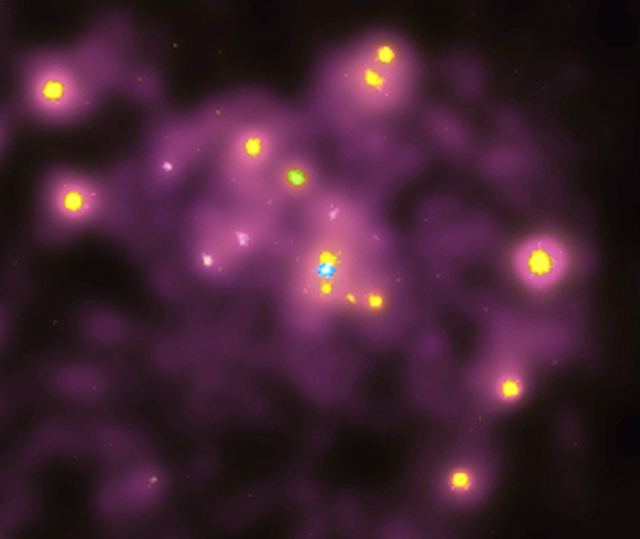flash wrote:What does the shape of the spiral arms relate to?
The spiral arms are a density fluctuation in the overall pattern of rotation. Stars move into the arms at the tail and then back out of them from the front edge. They are not produced because of the different rates of stellar rotation. If they were, the spiral would wind itself up over time. That doesn't happen.
Are not the stars closer to the center of the galaxy orbiting faster than those further out?
Only very close to the center- the inner few percent of the radius. Across almost the entire disc, the stars have the virtually the same angular velocity. The reason for this curious behavior is that the great majority of the galaxy's mass is in the dark matter halo surrounding it. This means that the gravitational effect of the central bulge and disc itself is small.
I have often wondered about the relationship between the spiral arm curvature and the rotational direction of the galaxy. I presume that the spiral arms are more visible due to the increased density of stars in them, and that most if not all of the stars in a spiral galaxy are orbiting the galaxy in the same direction (the direction the entire galaxy turns). I have heard that the spiral arms are wavefronts of such increased star density. Do these waves turn in the same direction as the stars? In the same direction as the galaxy as a whole?
It depends on your frame of reference. The spiral arms move backwards compared with the stars. If you define the galaxy rotation in term of the stars, you'd have to say the spiral arms rotate in the opposite direction from the galaxy. But if you define the galaxy rotation in terms of the arms with respect to some outside frame, everything is rotating the same way, just at different rates.
Given a spiral galaxy undisturbed by outside influences, I wonder how does the shape of the spiral arms change over time?
That's not well understood, but in general, spiral arms appear stable over very long periods (billions of years). So it is likely that you'd see no substantive change in the shape or number of arms.
 The Once and Future Stars of Andromeda
The Once and Future Stars of Andromeda



